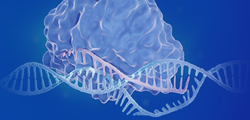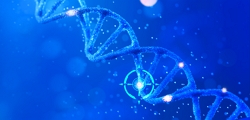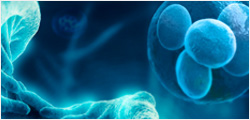-
REAGENT SERVICES
Hot!
-
Most Popular Services
-
Molecular Biology
-
Recombinant Antibody/Protein
-
Reagent Antibody
-
CRISPR Gene Editing
-
DNA Mutant Library
-
IVT RNA and LNP Formulations
-
Oligo Synthesis
-
Peptides
-
Cell Engineering
-
- CRISPR/Cas9 sgRNA
- CRISPR/Cas12a crRNA
- Prime Editing Guide RNA
- Base Editing Guide RNA
- HDR Templates
- gRNA + HDR Template Design Tools
- cGMP Guide RNA
- cGMP HDR Templates
- CRISPR/Cas Proteins
- CAR-T Knock-in Optimization Kit
- CRISPR Plasmids
- CRISPR gRNA Plasmid Libraries
- CRISPR Cell Lines
- Microbial Genome Editing
-
-
PRODUCTS
-
Most Popular Reagents
-
 Instruments
Instruments
-
Antibodies
-
ELISA Kits
-
Protein Electrophoresis and Blotting
-
Protein and Antibody Purification
-
Recombinant Proteins
-
Molecular Biology
-
Stable Cell Lines
-
Cell Isolation and Activation
-
 IVD Raw Materials
IVD Raw Materials
-
 Therapy Applications
Therapy Applications
-
Resources
-
- Pharmacokinetics and Immunogenecity ELISA Kits
- Viral Titration QC ELISA Kits
- -- Lentivirus Titer p24 ELISA KitHot!
- -- MuLV Titer p30 ELISA KitNew!
- -- AAV2 and AAVX Titer Capsid ELISA Kits
- Impurity Test ELISA Kits
- -- BSA ELISA Kit, 2G
- -- Cas9 ELISA KitNew!
- -- Protein A ELISA KitNew!
- -- His tagged protein detection & purification
- -- dsRNA ELISA Kit
- -- Endonuclease ELISA Kit
- COVID-19 Detection cPass™ Technology Kits
-
- Automated Maxi-Plasmid PurificationHot!
- Automated Mini-Plasmid PurificationNew!
- PCR Reagents
- S.marcescens Nuclease Benz-Neburase™
- DNA Assembly GenBuilder™
- Cas9 / Cas12a / Cas13a Nucleases
- Base and Prime Editing Nucleases
- GMP Cas9 Nucleases
- CRISPR sgRNA Synthesis
- HDR Knock-in Template
- CRISPR Gene Editing Kits and Antibodies
-
![AmMag™ Quatro Automated Plasmid Purification]() AmMag™ Quatro automated plasmid purification
AmMag™ Quatro automated plasmid purification
-
![Anti-Camelid VHH]() MonoRab™ Anti-VHH Antibodies
MonoRab™ Anti-VHH Antibodies
-
![ELISA Kits]() ELISA Kits
ELISA Kits
-
![Precast Gels]() SurePAGE™ Precast Gels
SurePAGE™ Precast Gels
-
![Quatro ProAb Automated Protein and Antibody Purification System]() AmMag™ Quatro ProAb Automated Protein and Antibody Purification System
AmMag™ Quatro ProAb Automated Protein and Antibody Purification System
-
![Target Proteins]() Target Proteins
Target Proteins
-
![AmMag™ Quatro Automated Plasmid Purification]() AmMag™ Quatro automated plasmid purification
AmMag™ Quatro automated plasmid purification
-
![Stable Cell Lines]() Stable Cell Lines
Stable Cell Lines
-
![Cell Isolation and Activation]() Cell Isolation and Activation
Cell Isolation and Activation
-
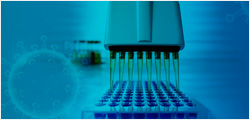 IVD Raw Materials
IVD Raw Materials
-
![Quick
Order]() Quick Order
Quick Order
-
![Quick
Order]() Quick Order
Quick Order
- APPLICATIONS
- RESOURCES
- ABOUT US
- SIGN IN My Account SIGN OUT
- REGISTER
Webinars » Llama-derived Nanobodies in the Fight Against Parkinson’s Disease
Llama-derived Nanobodies in the Fight Against Parkinson’s Disease
Parkinson’s disease (PD) affects more than 10 million people worldwide, and in the face of aging societies this number is expected to increase rapidly in the years to come. PD is a complex neurodegenerative disorder of which the exact underlying mechanisms are still insufficiently understood, and treatments that can halt or even just slow down the disease are lacking. Mutations in the gene coding for the protein Leucine-Rich Repeat Kinase 2 (LRRK2) form one of the major causes of the inherited form of PD, while overactivation of LRRK2 is also associated with idiopathic PD. Therefore, LRRK2 is considered as one of the most promising targets for drug development.
In this webcast an overview will be given of recent research performed by the team of Wim Versées and collaborators, revealing new mechanisms that underly the activity and regulation of LRRK2. Subsequently, we will discuss how these new insights triggered the discovery of Nanobodies that interfere with LRRK2 activity and regulation in a number of different ways. Nanobodies are small, single-domain fragments of heavy-chain antibodies that occur in all members of the camelid family. Finally, the future potential applications of these Nanobodies in the fight against PD will be reflected upon.
Join Dr. Wim Versees from Vrije Universiteit Brussel and discover
How fundamental insights into enzyme mechanisms can lead to novel therapeutic strategiesThe different steps in nanobody generation and characterizationHow nanobodies can modulate (inhibit/activate) protein activity in many different ways
Webinar Details
- Date: 31st May 2022
- Time: 16:00 CEST
- Speaker:
 Wim Versées
Wim Versées
a professor in enzymology and structural biology at the Vrije Universiteit Brussel (VUB) and the Flemish Institute of Biotechnology (VIB)
Wim Versées is a professor in enzymology and structural biology at the Vrije Universiteit Brussel (VUB) and the Flemish Institute of Biotechnology (VIB). After obtaining his PhD in 2002 at the VUB and a postdoctoral stay at the Max Planck Institute, he returned to the VIB-VUB Center for Structural Biology. The Versées lab aims to study the mechanism and regulation of medically important enzymes and proteins. These insights are subsequently used to devise new strategies for therapeutic intervention, making regularly use of Nanobody technology
Related Products & Services
Speaker-related Webinars
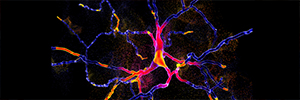
Llama-derived Nanobodies in the Fight Against Parkinson’s Disease
Llama-derived nanobodies in the fight against Parkinson’s disease

-



